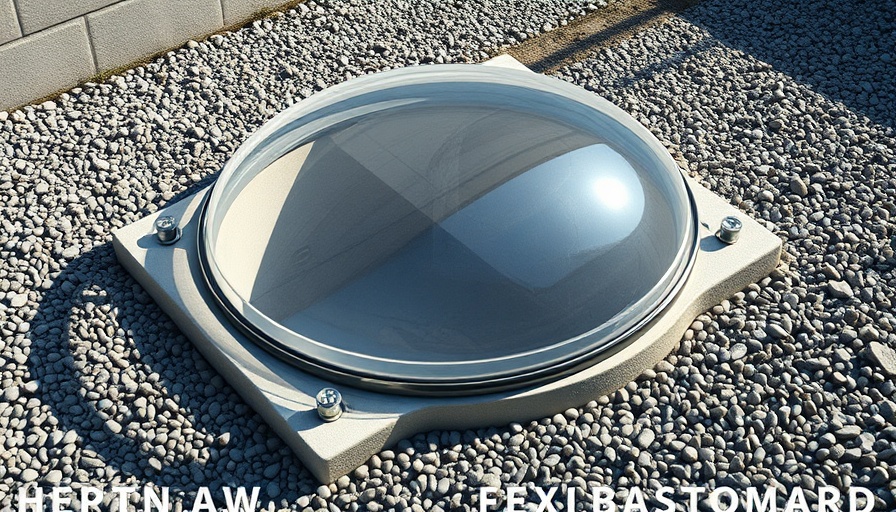
Maximize Benefits: Your Guide to Polycarbonate Window Well Covers
As homeowners increasingly seek energy-efficient solutions, polycarbonate window well covers have emerged as a popular choice. Not only do these transparent covers enhance safety and aesthetics, but they also boast significant energy-saving properties, making them essential for green homes.
Why Polycarbonate is a Top Choice for Window Well Covers
Polycarbonate, renowned for its strength and durability, serves as an excellent material for window well covers. Unlike traditional materials, polycarbonate is both UV-resistant and impact-resistant, providing lasting protection against the elements. Developing a deep understanding of these benefits can turn an ordinary home into a sanctuary of sustainability and safety.
The Protection You Need
One of the core advantages of polycarbonate window well covers is their ability to shield your home from adverse weather conditions. Heavy rain, snowfall, and debris are common challenges, especially for those living in climates laden with unpredictable weather patterns. The clear nature of polycarbonate allows sunlight to flood basements without allowing moisture to enter, thereby preserving the integrity of window wells and reducing the likelihood of flooding and rust issues over time.
Child and Pet Safety: A Vital Consideration
Window wells can pose significant safety hazards, especially for curious children and pets. Polycarbonate covers act as a barrier to prevent accidents, while their sturdy design supports significant incidental weight. Investing in these protective covers not only safeguards family members but also protects wildlife from accidental trapping.
Energy Efficiency: Saving on Utility Bills
Homeowners focused on energy reduction will appreciate how polycarbonate window well covers help maintain basement temperatures. By minimizing heat loss in winter and preventing excessive heat gain in summer, these covers work as thermal barriers. This translates into lower energy bills, enhancing your overall sustainability strategy. With an R-value of 3 to 5, insulated covers significantly improve energy efficiency in various climates.
The Importance of Secure Window Well Covers for Home Security
Window wells can unfortunately become entry points for burglars. A solid polycarbonate cover can serve as a robust physical deterrent. Featuring tamper-resistant locks and reinforced materials, these covers make it far less likely for an intruder to targeting your home. Security measures like alarm systems can be integrated for added protection.
Environmental Considerations: A Sustainable Choice
Polycarbonate window well covers not only enhance home safety and energy efficiency but also align with the principles of sustainable development. Utilizing materials like these helps homeowners reduce their carbon footprint, contributing to initiatives like tree planting and forest restoration. Opting for locally sourced polycarbonate products supports local economies and minimizes transportation-related emissions, leading to overall reduced resource consumption.
The Aesthetic Appeal of Clear Covers
While functionality is vital, the visual impact of window well covers shouldn’t be overlooked. Clear polycarbonate covers add timeless elegance to any home style. Their sleek, unobtrusive design enhances curb appeal and adds to the market value of your home.
Maintenance Tips for Longevity
To ensure optimal performance, it's crucial to implement a regular cleaning and maintenance schedule for your window well covers. Keeping these covers free from debris not only preserves their clarity and appearance but also maintains their efficiency in regulating temperature and preventing moisture buildup.
Consider Seasonal Changes
With changing seasons, the angle of sunlight can greatly influence light efficiency. Following maintenance practices tailored to seasonal shifts—like cleaning and possibly recalibrating—ensures that your window well covers perform optimally year-round.
Making the Right Purchase Decisions
In choosing the right polycarbonate window well covers, it is essential to consider both energy efficiency and your specific climate needs. Consult with experts or local vendors who can provide insights tailored to your geographical location and environmental concerns.
Explore Local Providers
Supporting local businesses when acquiring your window well covers not only supports the economy but often grants you access to tailored service. Local experts are familiar with regional weather challenges and can provide solutions that are not just functional but also supportive of sustainable practices.
Conclusion: A Call for Action
Investing in polycarbonate window well covers represents not just a wise upgrade for your home, but a pledge towards sustainable living. By enriching your home’s aesthetic, prioritizing safety, enhancing energy efficiency, and supporting eco-friendly practices, these covers are a crucial component for any homeowner focused on an eco-conscious lifestyle. Don't leave your window wells vulnerable; protect your home and family while contributing to sustainable development.
 Add Row
Add Row  Add
Add 




Write A Comment